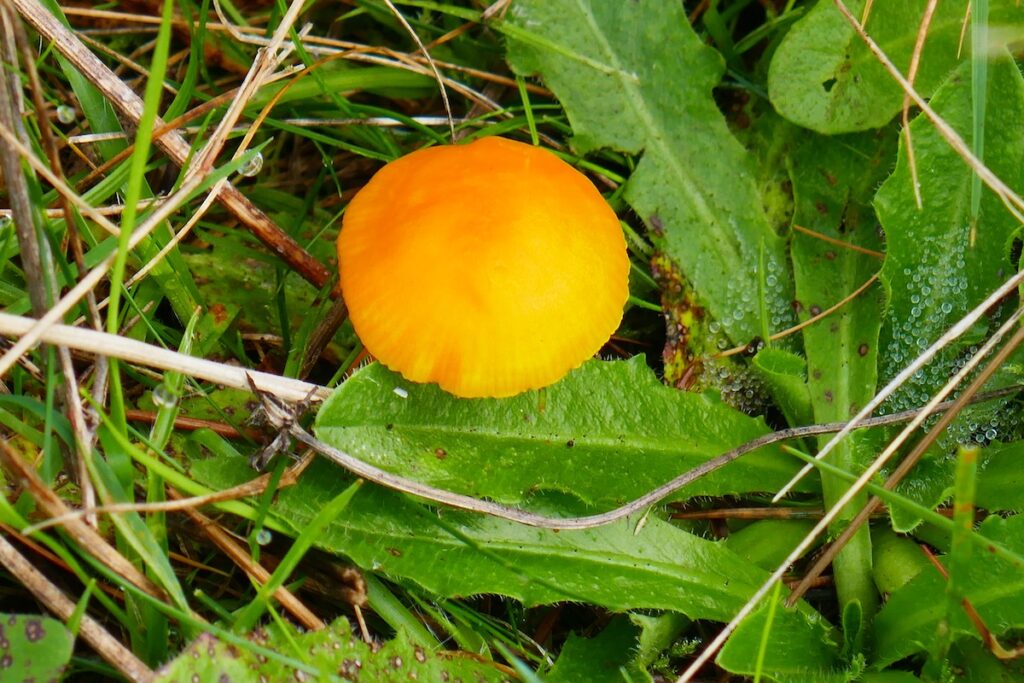John Maxen, Chair, Friends of Sunbury Park
Sunbury Park is fortunate is having an interesting and varied history in terms of land use. Investiga-tions have shown the influence of man and animals for more than one thousand years. Evidence of this early use can still be seen in the patterns of ridge and furrow across the park, a system of ploughing used in Europe during the Middle Ages. The changes to more formal use in the 17th century onwards has led to the park having a varie-ty of grassland and woodland habitats that have created ecological niches for many species of fungi to survive. There are over 15000 species of fungi found in the UK today with more being regularly discovered.
Fungi are able to live in soil, in the water, in the air, and on plants and animals. They vary widely in size and form, from the very small such as pinhead moulds to giant puffballs that can be as big as a football. The most obvious in Sunbury Park are the cap fungi (toadstools and mushrooms) but bracket fungi, puff-balls and cup fungi are also common.
Visitors to Sunbury Park in Autumn can, with a little searching, discover a wide variety of fungi of varying shapes and sizes. However, what you are seeing (the mushroom or toadstool), is the non-flowering fruiting body from which the next gener-ation of spores are dispersed, in some cases quite explosively. The main structure of a fungus con-sists of a mass of filamentous threads running through the soil. These threads are called hyphae and collectively are called a mycelium and they perform a variety of functions. Apart from contain-ing the genetic material of the fungus, hyphae ab-sorb nutrients from the soil and transport them to other parts of the fungus body.

The trees (and shrubs) in Sunbury Park benefit greatly from a type of fungus known as a mycorrhi-za, of which there are many types. These fungi live in mutual (or symbiotic) benefit with the trees and are an incredibly important part of the soil food web – the tree provides carbon and sugars for the fungus, while the fungus provides other nutrients back to the tree. Exchange is enabled by sheaths of hyphae that covers or penetrates the tree roots. Many trees, for example, have an extensive net-work of fungi attached to their roots. It is estimated that up to 15 distinct species of fungi might be at-tached to the tree – and within a wood there is a vast underground system, perhaps up to several thou-sand or more distinct species of fungi, often linking trees to each other. It has been called the Wood-wide Web.
Below are a few pictures of fungus that have been observed in the park outlining the wide range of shapes and colours.
However, a word of caution- please do not pick or take any fungus you may find. Many are ei-ther inedible or poisonous and indeed, some can be fatal if consumed. Instead, just observe and wonder at how such a small organism on the soil surface can be so vast and important to the structure and survival of the nature of Sunbury Park.

